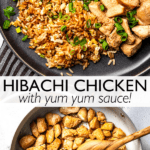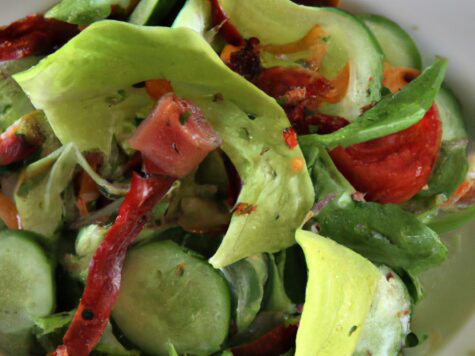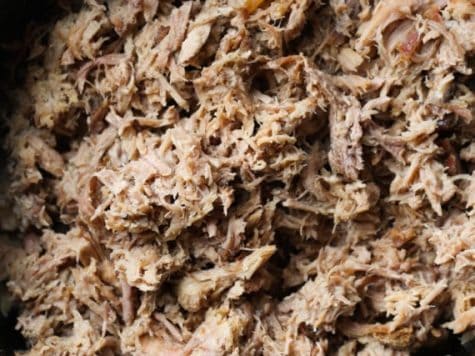This Hibachi Chicken recipe is easy and fun, with savory chicken, crisp-tender veggies, and authentic fried rice. With a side of creamy yum yum sauce, it’s sure to be a hit!
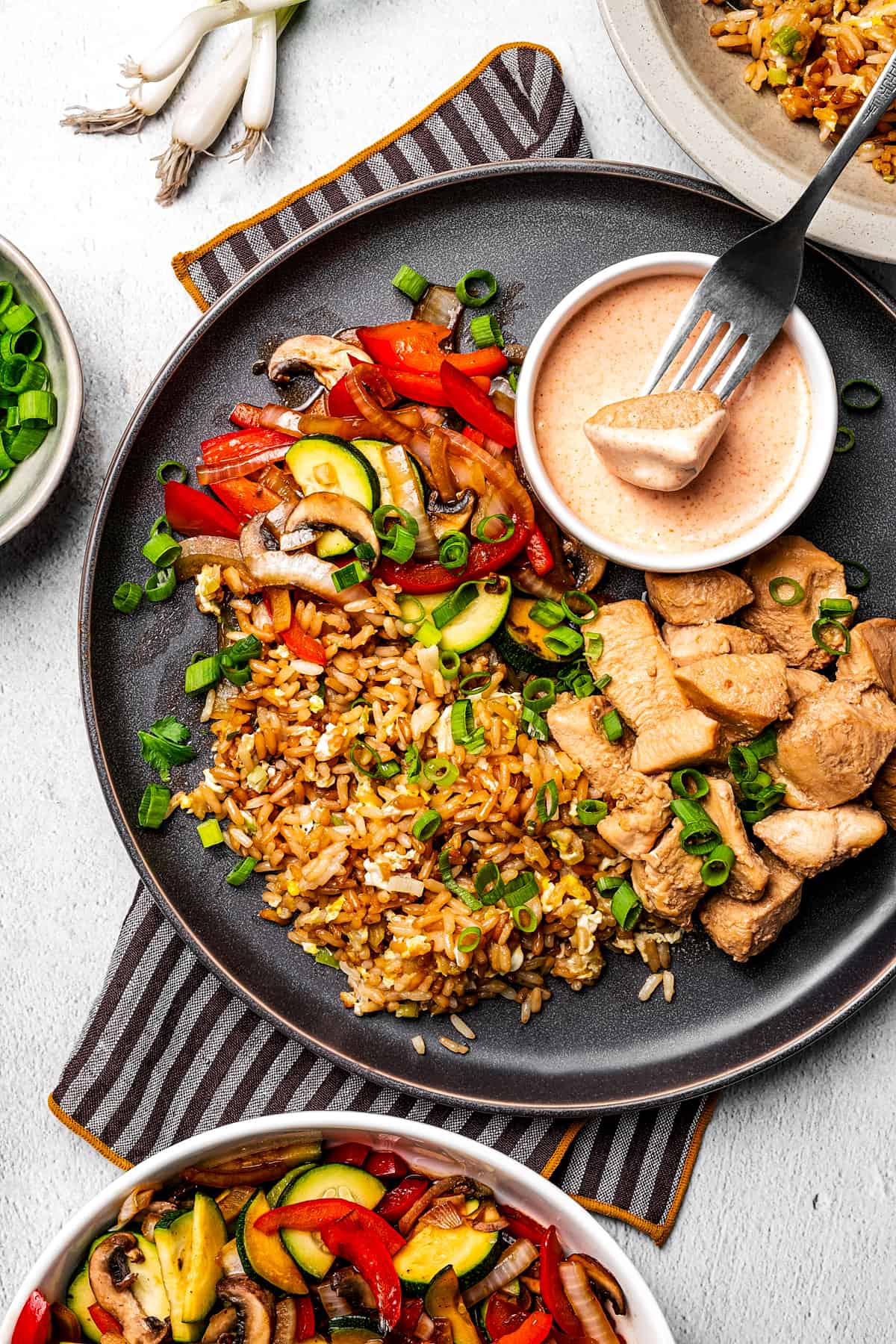
Restaurant-Style Hibachi Chicken with Fried Rice and Veggies
There’s nothing quite like hot chicken and veggies, right off the grill at your favorite hibachi place. But, what if you could get those same flavors at home? With this simple recipe, you can! It’s actually very easy to make a high-temp, high-flavor hibachi recipe, without special equipment or ingredients. I’ll show you how, step by step.
This recipe includes all of your hibachi favorites: the chunks of chicken flavored with garlic, sesame, and ginger; the fragrant fried rice; and the colorful “grilled” veggies with hoisin sauce.
We’ll even make some simple homemade yum yum sauce for dipping! This is perfect for an evening in with your favorite people, or a fantastic meal prep that’ll make your lunchtime feel like a treat.
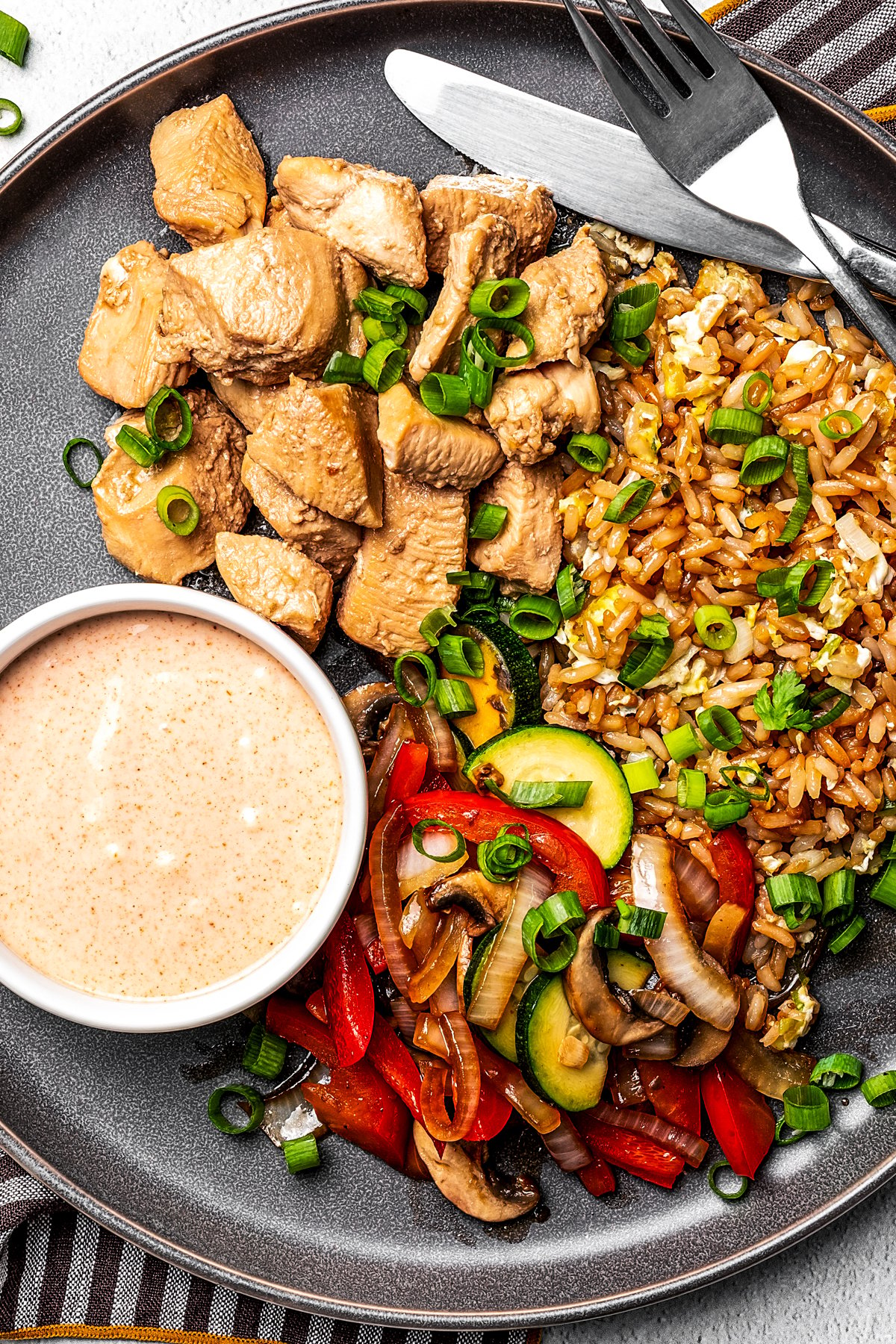
What Is Hibachi Chicken Made Of?
Let’s take a look at the ingredients you’ll need to make this easy recipe. Each part of the dish – chicken, vegetables, and fried rice – is super simple!
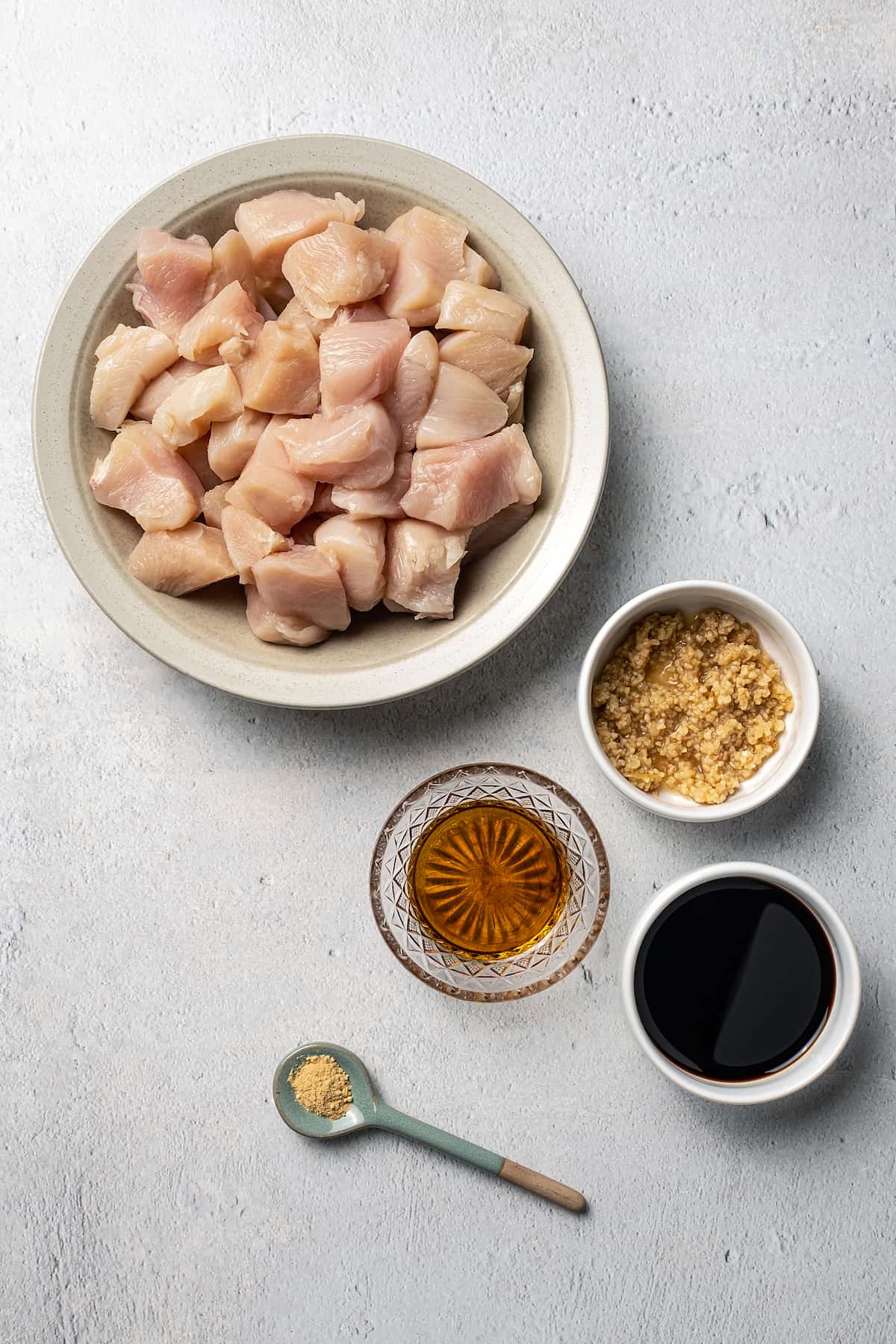
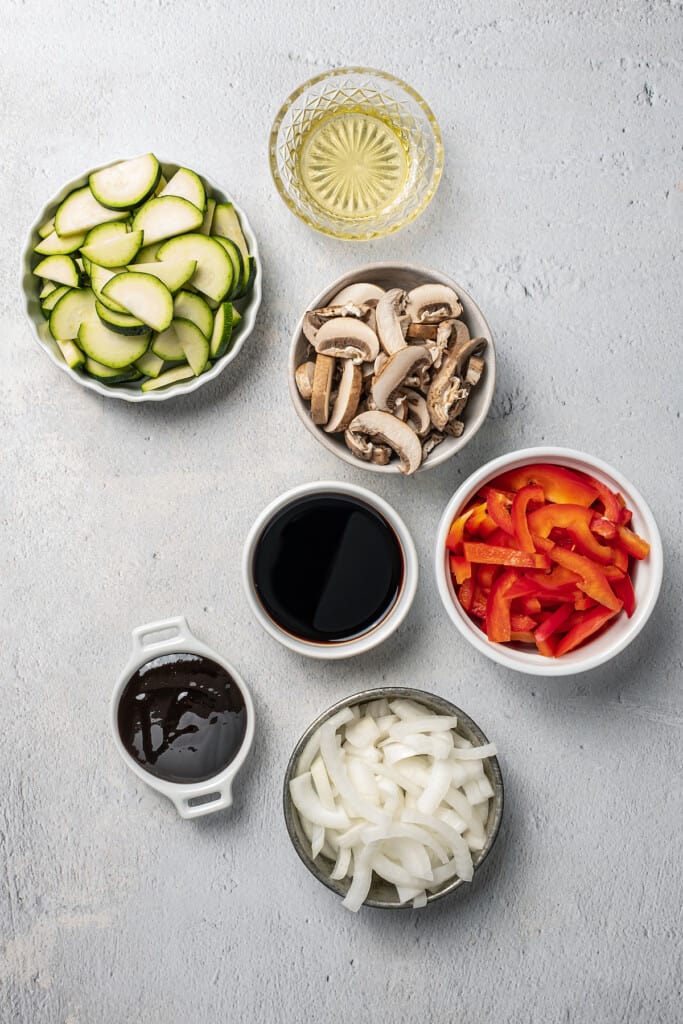
For the Hibachi Chicken
- Chicken: Cut up your boneless, skinless chicken breasts into bite-sized pieces.
- Garlic: Mince up a few cloves of fresh garlic.
- Soy Sauce: I prefer low-sodium soy sauce, but you could also use regular soy sauce, or substitute tamari or coconut aminos.
- Sesame Oil: So flavorful! Sesame oil adds a mellow nuttiness to the chicken.
- Ginger: A little ground ginger is the perfect finishing touch.
For the Vegetables
- Vegetable Oil: 1 tablespoon vegetable oil
- Onion: One small yellow onion or half a large onion, sliced.
- Bell Pepper: Red bell pepper is my favorite, but green or yellow would also work perfectly.
- Zucchini: Slice one small zucchini.
- Mushrooms: I like baby bella mushrooms, but any kind are fine.
- Soy Sauce: Just a bit. Feel free to substitute tamari or coconut aminos.
- Hoisin Sauce: Hoisin sauce is sweet, tangy, and has a rich umami flavor also, like an Asian barbecue sauce with a lot of soy sauce flavor.
- Salt and Pepper
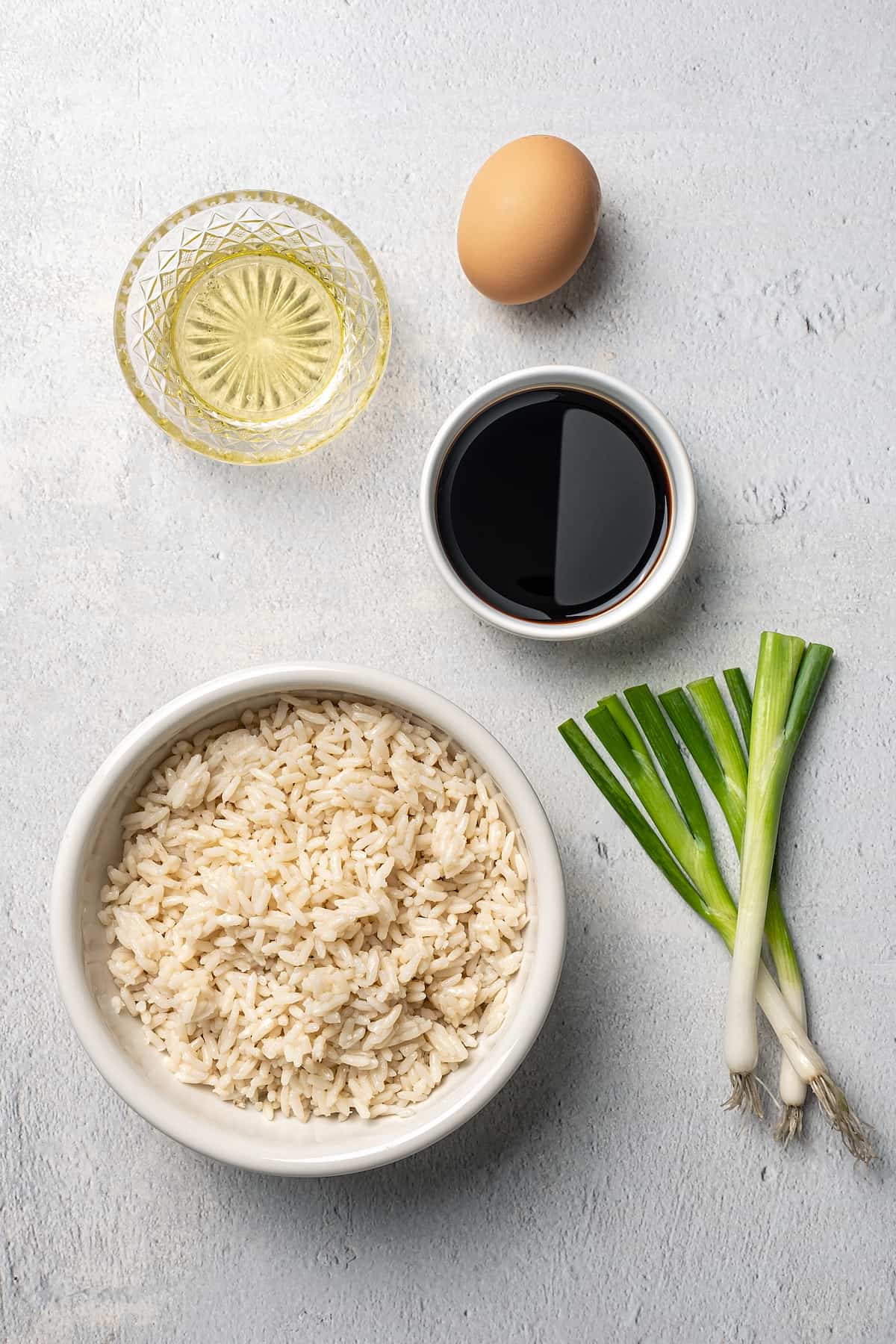
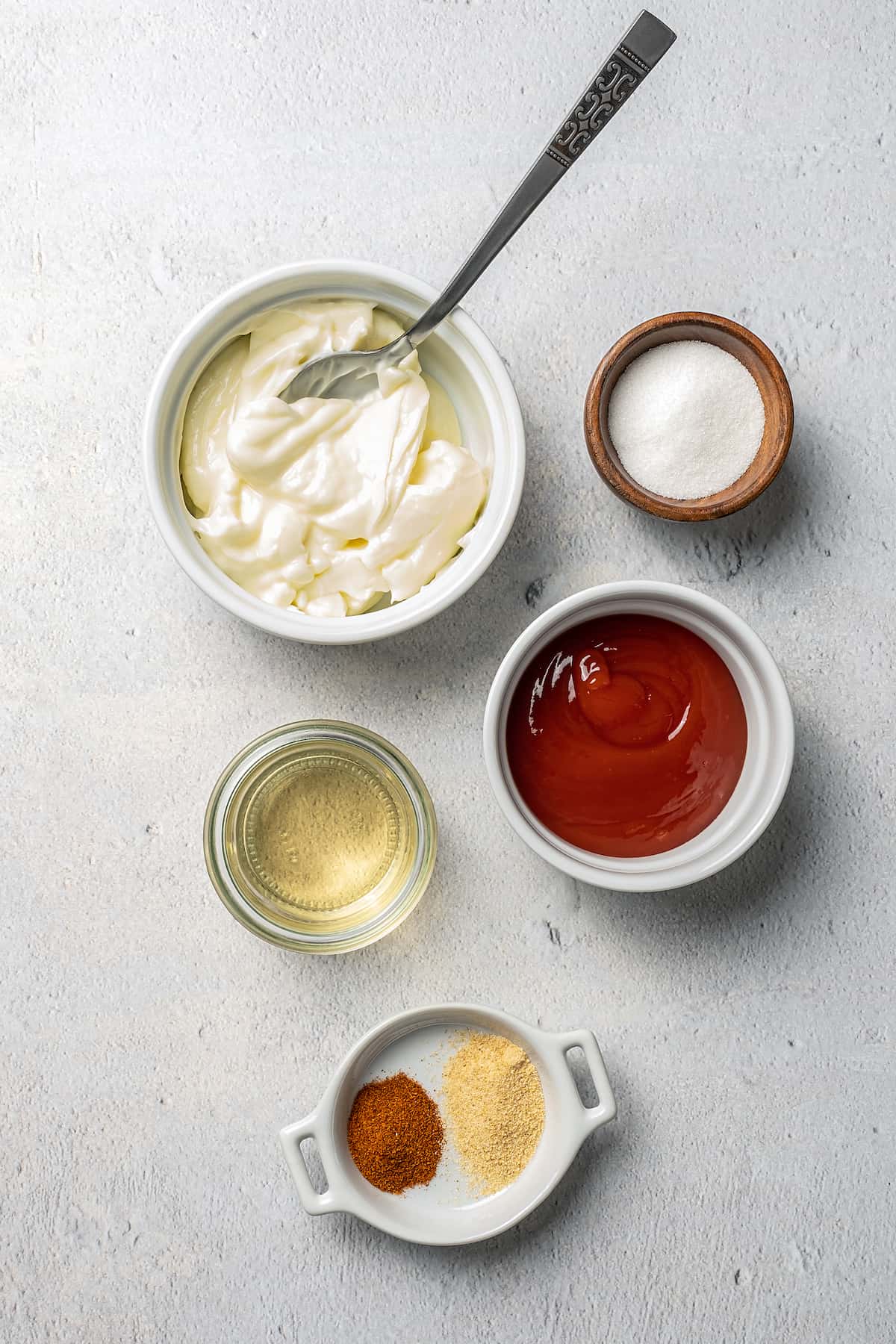
For the Fried Rice
- Oil: For stir-frosting.
- Green Onions: You’ll use the white parts for cooking, and the green parts for garnish.
- Rice: Cooked white rice.
- Soy Sauce
- Egg: One large, whole egg for scrambling into the rice.
For the Yum Yum Sauce
- Mayonnaise: If you have it, you can use Japanese mayonnaise here, but regular mayonnaise is also fine.
- Ketchup: A couple of tablespoons of ketchup gives the sauce its pink color and tons of flavor.
- Sugar: Just a bit, for additional sweetness.
- Paprika: Regular (aka sweet) paprika, not smoked.
- Garlic Powder: This adds an intense, savory note.
- Rice Vinegar: Rice vinegar is
- Water: 2 tablespoons water
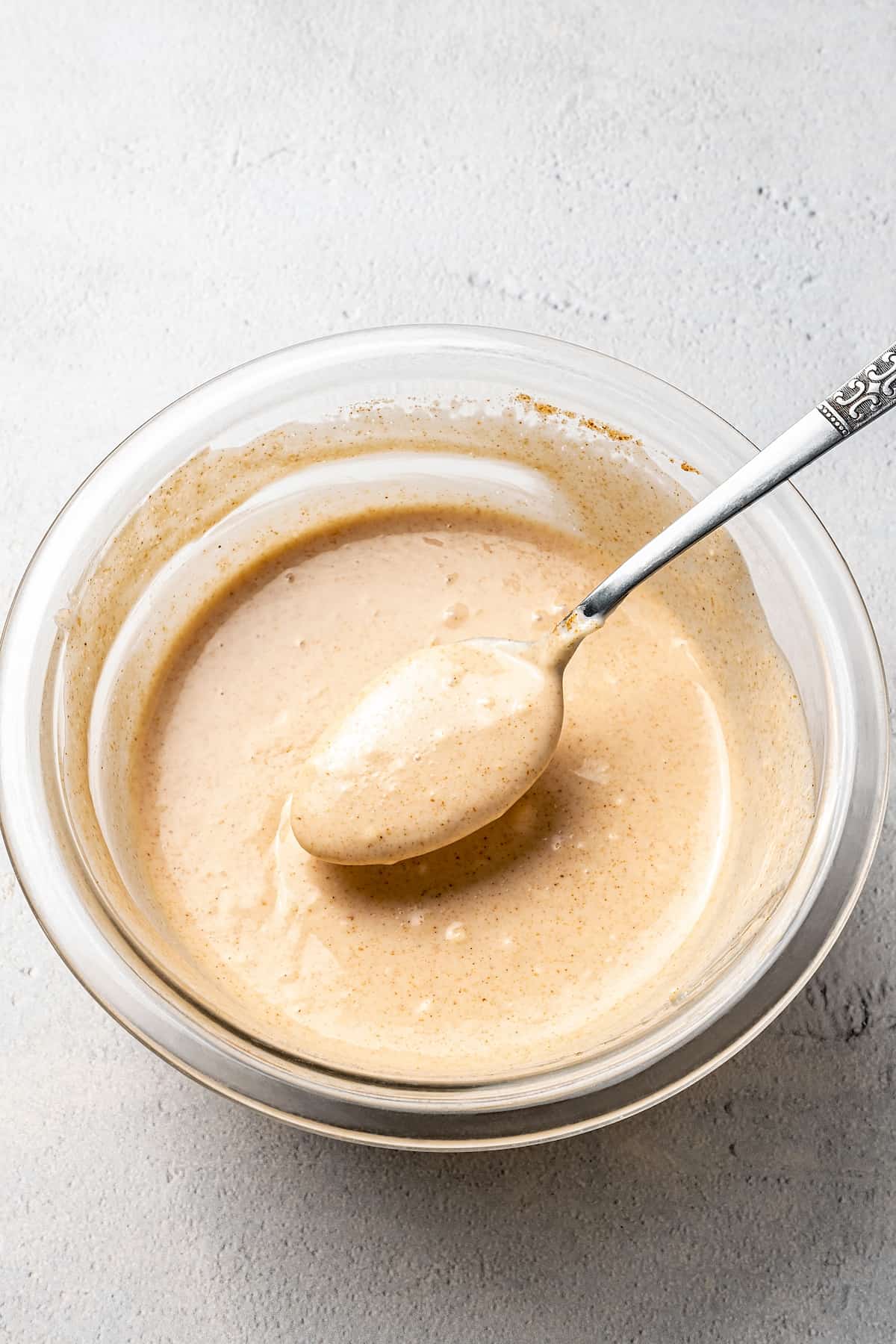
How to Make This Meal
Okay, so there are basically three components to this dinner, plus dipping sauce. But they all are cooked one at a time in the same skillet! Don’t worry, it’s surprisingly fast, and easy to do. Here are the steps:
Make the Yum Yum Sauce
- Mix the Ingredients. This tastes best if you make it a couple of hours in advance and let it rest in the fridge. However, you can definitely make it right before serving. In a bowl, whisk together the mayonnaise, ketchup, sugar, paprika, garlic powder, rice vinegar and water.
- Thin the Sauce. Add more water for a thinner consistency, one tablespoon at a time, to your taste.
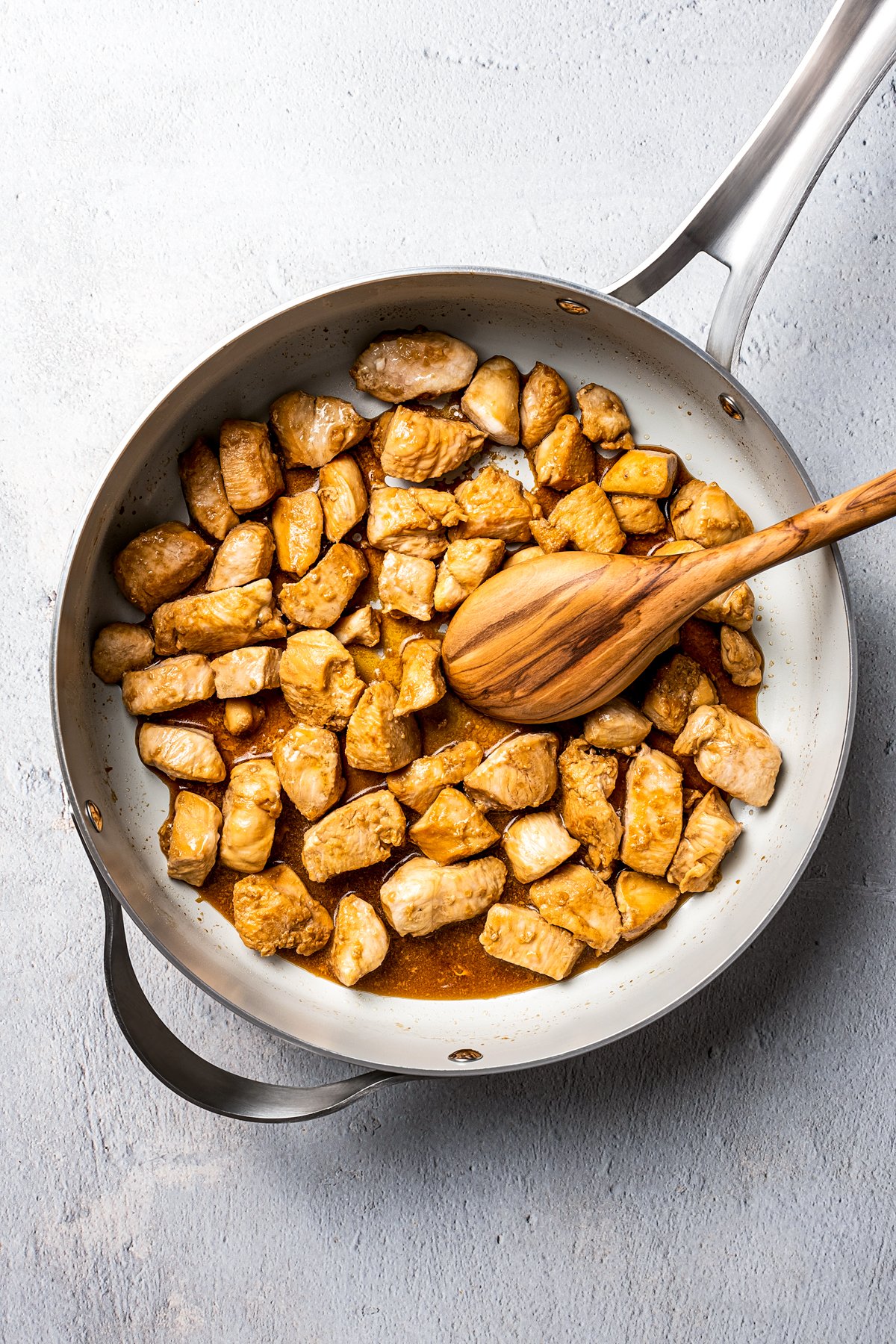
Make the Hibachi Chicken
- Season the Chicken. In a medium bowl, combine the chicken pieces, garlic, soy sauce, sesame seed oil, and ginger. Give it a stir to combine.
- Cook the Chicken. Next, heat up your wok or large skillet or wok on medium-high. Once it’s hot, cook the chicken for 6 to 8 minutes, or until cooked through. Stir it occasionally so that all of the sides get browned evenly.

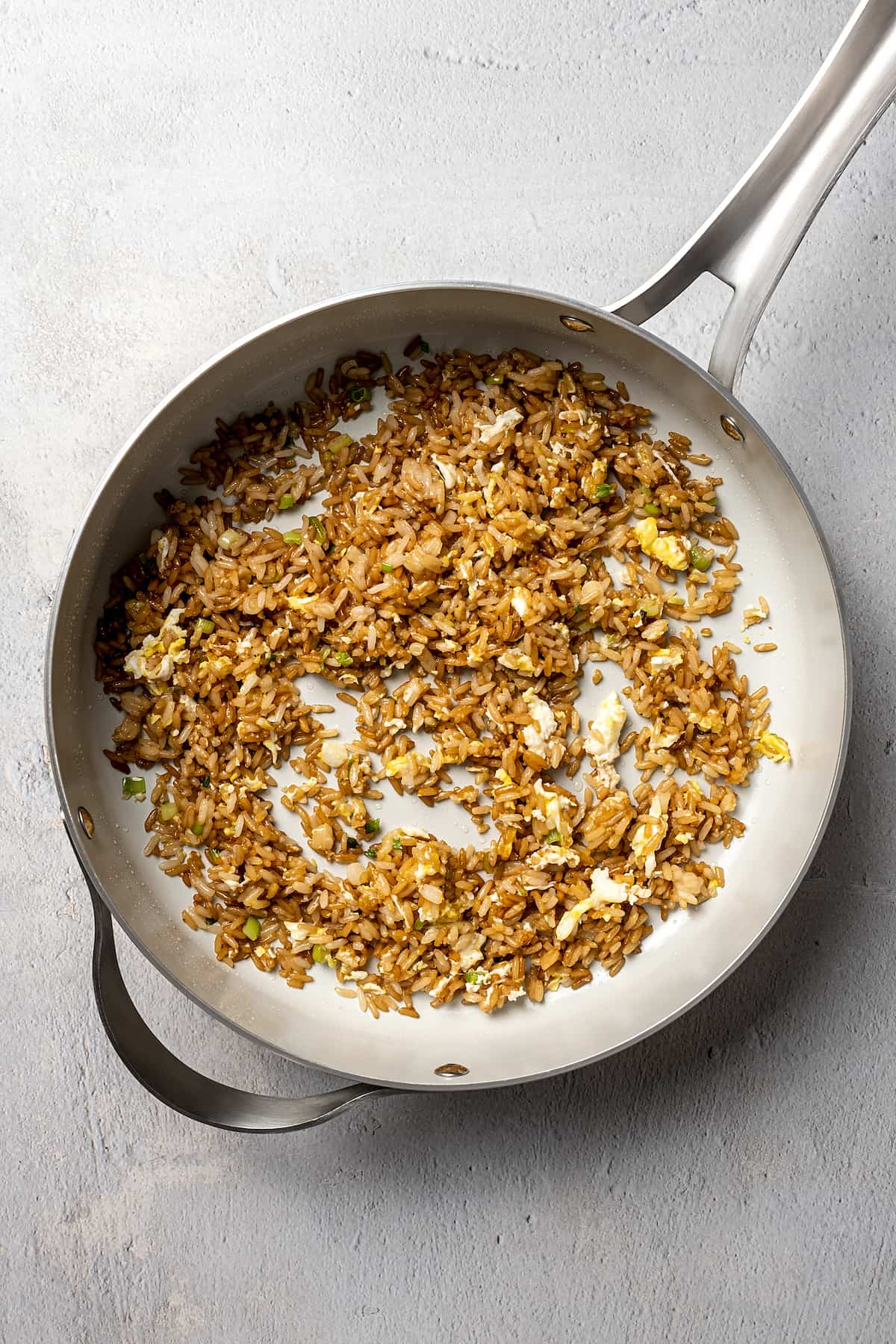
Make the Vegetables
- Reset the Skillet. Set the cooked chicken aside, wipe down the skillet, and return it to the heat. Add a tablespoon of vegetable oil, and let it heat it up.
- Cook the Veggies. Add the sliced onions to the hot oil and cook for about 1 minute. Follow this with the sliced peppers, zucchini, and mushrooms, the soy sauce and hoisin sauce, and a sprinkle of salt and pepper. Stir-fry for about 5 minutes, or until the veggies are crisp-tender.
Make the Fried Rice
- Reset the Pan Again. Set the cooked vegetables aside, and return the pan to the heat. Pour 2 tablespoons of vegetable oil in it, and let it heat up.
- Cook the Green Onions, Rice, and Soy Sauce. Add the green onions to the hot oil and cook for about 30 seconds, before adding the rice and soy sauce. Stir and cook for 5 minutes, or until the rice is heated through.
- Add the Egg. Next, make a well in the center of the rice, and crack in the egg. Stir and toss the rice to scramble the egg until it’s set.
Serve
Once all of the components are ready, plate up your hibachi chicken with the vegetables, fried rice, and yum yum sauce on the side. Serve immediately, and enjoy!
FAQs
Here are some quick answers to questions people often ask about Hibachi chicken:
These dishes are very similar, with the main difference being the sauce. Hibachi-style chicken is a little less saucy overall, with simple flavors of ginger, soy sauce, and garlic. Teriyaki chicken comes in a sweet and savory sauce that’s thicker, and due to the sugar content, a bit syrupy. Both are scrumptious in their own way!
Okay, so technically a hibachi is a small charcoal grill with grates – not what you might think of when you think of a Benihana recipe, right? The technical term for the hot, flat, griddle surface used in restaurants to make “hibachi” chicken is actually “teppanyaki.”
Both small hibachi and griddle-like teppanyaki grills make amazing food. To get a similar result as your favorite hibachi place, I recommend using either a large skillet or wok, or a big preheated griddle.
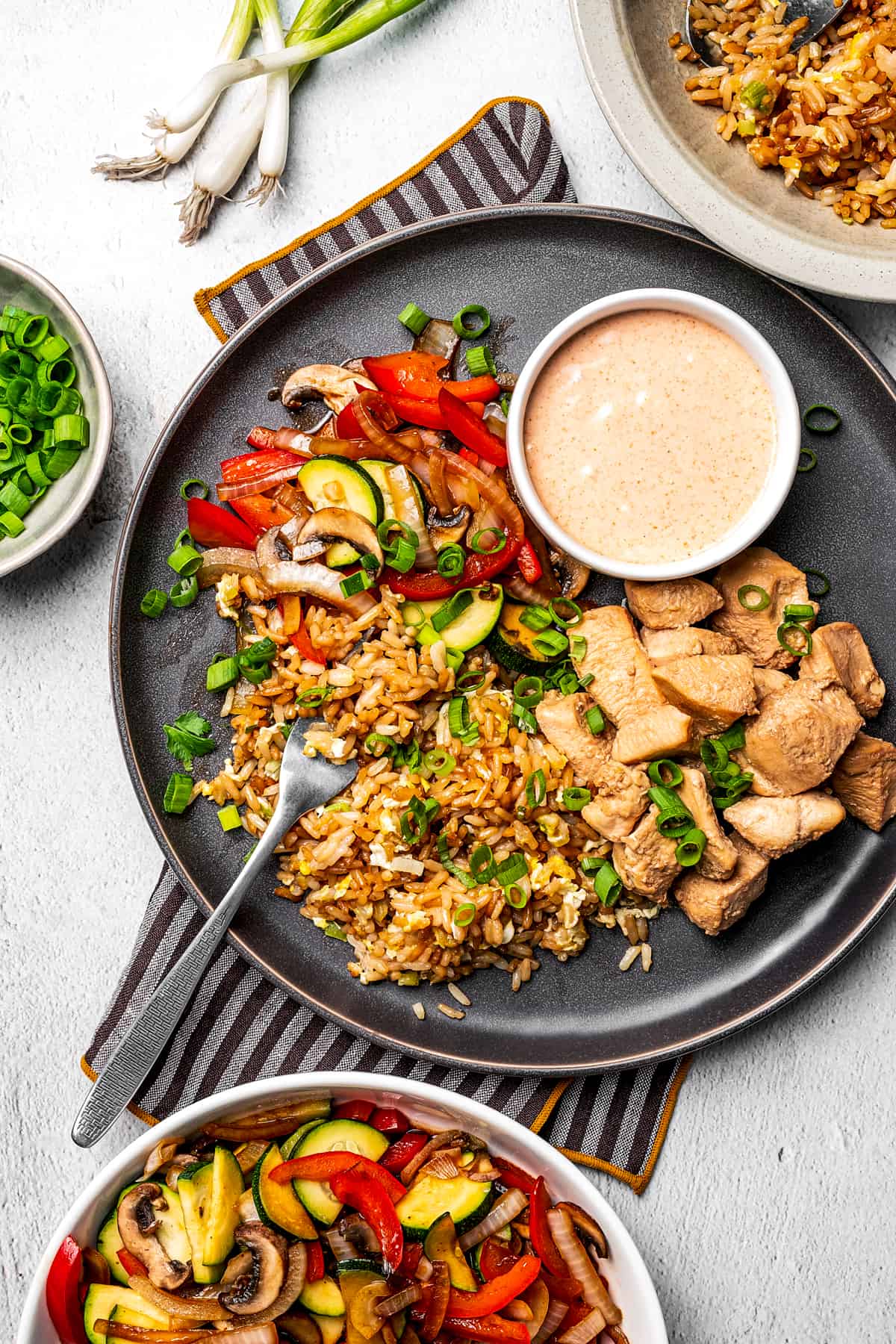
Recipe Notes
When it comes to making your own hibachi chicken, there are a few helpful pointers you should know before you get started. These are my top tips for a great meal:
- Use Leftover Rice: Authentic fried rice gets its special texture partly from being made with leftover rice. If you can, make the rice a day before you need to fry it, and store it in the fridge. If you can’t do that, try using pre-cooked rice from the grocery store.
- Use High Heat: To get a real hibachi taste, it’s important to cook using a high temperature. A low temperature tends to steam food, rather than caramelize it.
- Chicken Options: Chicken breasts work well here, but chicken thighs can easily be substituted. Just remember, dark meat often benefits from a slightly longer cook time to become tender and cook through.
- Great for Meal Prep: Hibachi chicken is a fabulous recipe to prepare in advance, portion out, and have for lunch over the next couple of days.
Serving Suggestions
This is really a complete meal, but I do have some suggestions for starters and sides. These easy recipes will add serious oomph to your hibachi chicken.
- Soba Noodles: The perfect starter for any Japanese-inspired meal, Easy Soba Noodle Soup is warm, comforting, and full of nourishing vegetables.
- Shrimp Fried Rice: Make your meal that much more exciting with Shrimp Fried Rice in place of the regular fried rice. Succulent shrimp are the perfect upgrade to this easy hibachi dinner.
- A Light Salad: Cool things down with a crisp, fragrant Sesame Cucumber Salad. It’s healthy, easy to make, and addictive – try it once and you’ll make it all the time!
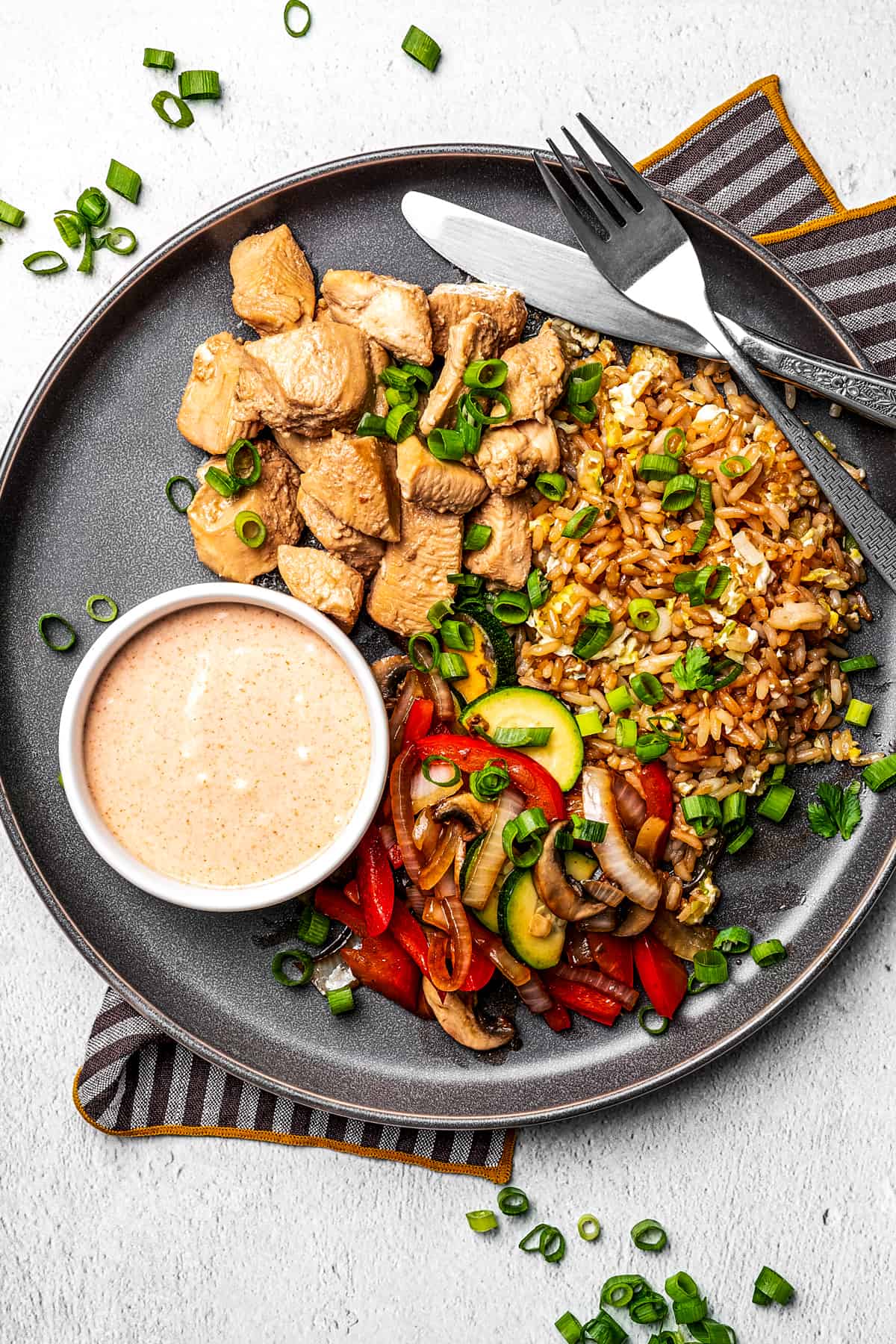
How to Store and Reheat the Leftovers
- Leftover hibachi chicken can be stored in zip-top bags or airtight containers in the fridge. The rice will last up to five days, while the chicken and vegetables will be good for three or four days.
- To reheat, place the ingredients in a covered skillet over low heat, sprinkling everything with a little bit of water to keep it moist. Heat until warmed through, but don’t overcook or the dish will be very dry/mushy.
Can I Freeze Hibachi Chicken?
You can definitely freeze the rice and the chicken – I would avoid freezing the vegetables, since they have a tendency to be mushy when thawed and reheated.
- To freeze the fried rice, cool it down and store in a freezer bag or shallow airtight container. Try not to leave any air in the container or bag, to reduce the possibility of freezer burn. Freeze for up to 3 months.
- To freeze the hibachi chicken, cool it down and pack it in a freezer bag, pressing out as much air as possible before sealing. Freeze for up to four months.
- To serve, thaw the chicken and/or rice in the fridge overnight, and then reheat as directed above.
ENJOY!
FOR THE CHICKEN
-
Place cut up chicken in a mixing bowl.
-
To the chicken add the minced garlic, soy sauce, sesame seed oil, and ginger; stir to combine.
-
Heat a large skillet or wok over medium-high heat.
-
Add the chicken to the heated skillet and cook for 6 to 8 minutes, or until chicken is cooked through. Stir occasionally.
-
Remove from the skillet and set aside.
FOR THE VEGETABLES
-
Wipe down the skillet and return to the burner.
-
Add 1 tablespoon vegetable oil and heat it up over medium-high heat.
-
Add the sliced onions to the hot oil and cook for 1 minute.
-
Stir in the slices of peppers, zucchini, and mushrooms.
-
Add the soy sauce, hoisin sauce, and season with salt and pepper.
-
Stir and cook for about 4 to 5 minutes, or until the veggies are crisp-tender.
-
Remove veggies from the skillet and set aside.
FOR THE RICE
-
Return pan to the burner.
-
Add 2 tablespoons vegetable oil and set over medium-high heat.
-
Add in the green onions and cook for 30 seconds.
-
Stir in the rice and soy sauce; cook for 5 minutes or until rice is heated through.
-
Make a well in the center of the rice and crack in the egg; stir, toss, and scramble until egg is set.
-
Remove from heat.
MAKE THE YUM YUM SAUCE
-
In a bowl combine the mayonnaise, ketchup, sugar, paprika, garlic powder, rice vinegar and water; whisk until completely incorporated. Add more water for a thinner consistency, one tablespoon at a time.
-
For best flavor, refrigerate for a couple hours before using.
-
Serve Hibachi Chicken with the vegetables, fried rice, and yum yum sauce on the side.
Calories: 743 kcal | Carbohydrates: 39 g | Protein: 32 g | Fat: 50 g | Saturated Fat: 8 g | Polyunsaturated Fat: 28 g | Monounsaturated Fat: 12 g | Trans Fat: 0.1 g | Cholesterol: 137 mg | Sodium: 1400 mg | Potassium: 931 mg | Fiber: 3 g | Sugar: 10 g | Vitamin A: 1681 IU | Vitamin C: 53 mg | Calcium: 63 mg | Iron: 2 mg | Net Carbs: 36 g
Nutritional info is an estimate and provided as courtesy. Values may vary according to the ingredients and tools used. Please use your preferred nutritional calculator for more detailed info.

